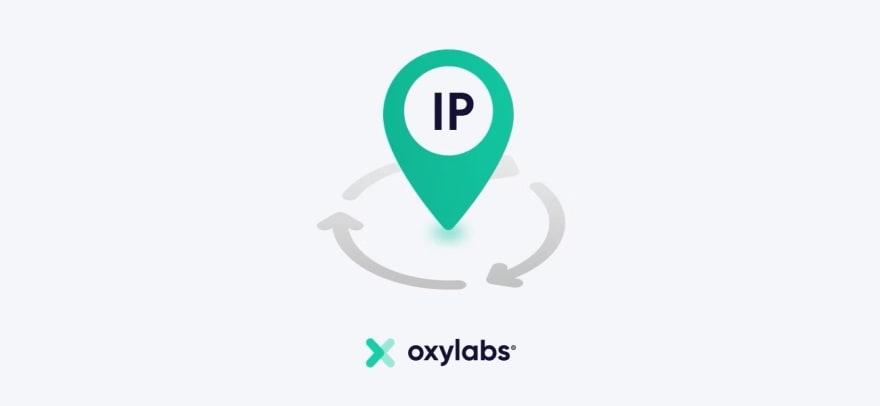The likelihood of stumbling upon the term “rotating IPs” is high enough to warrant the curiosity about all things IP rotation. To fully understand the purpose of this practice, let’s see what IP rotation is and what it is used for.
What is IP address rotation?
First, let’s start with the basics: What is an IP address?
An IP address identifies a device connected to the internet, just like our physical addresses identify where the letters, parcels, and other goods should be delivered. There are two types of IP addresses: IPv4 and IPv6.
IP rotation is a process where assigned IP addresses are distributed to a device at random or scheduled intervals.
For example, when a connection is active via an Internet Service Provider (ISP), an IP address is automatically attached from a pool of IPs. As soon as disconnection and reconnection occur, the ISP will distribute the next available IP address.
The ISPs rotate IP addresses because they usually have more users than IP addresses at their disposal. Hence, when a particular user disconnects, the ISP will bring back the user’s most recently used IP address to their pool of IP addresses, thus ensuring the optimization of existing resources.
What is a proxy rotation?
Proxy rotation is a process of assigning a new proxy with every request sent to the target. A rotating proxy itself is an IP address that is changed with another IP address when required.
The ISPs rotate IP addresses - the usual practice that is transparent to their users. However, out there in the online world, there are plenty of cases when internet users rotate their IP addresses intentionally. In fact, not even an IP address, but they rotate proxies, which allows them to operate under multiple different IP addresses.
If a proxy server is configured accurately, rotating IP addresses from a proxy pool of IP addresses is possible. With rotating proxies, you can manage numerous connections from a single device, and carrying out web crawling and data scraping operations becomes a much easier task.
There are different methods used to rotate IP addresses. In some cases, it has to be done manually, as is the case with Chrome proxies (learn how to use proxy in Chrome). But here at Oxylabs, we provide a Proxy Rotator that does all the work for you.
How does it work? A client gets one entry node (with the necessary amount of static proxies inside) which is used as a static address in order to get a proxy from the list. The rest is pure magic on our side! The rotator works by the random IPs method, meaning it rotates an IP on each request.
First and foremost, proxy rotation enhances the level of anonymity. Secondly, as already mentioned, it is a widely used practice to automate such tasks as data scraping and web crawling in order to increase success rates.
When it comes to web scraping operations, a common challenge faced by many is avoiding getting blacklisted, flagged, or banned by websites while trying to gather the data.
Several techniques can aid the prevention of such disruptions, and one of them is proxy rotation. It can help operate scrapers past most of the anti-scraping measures as it allows one to imitate the behavior of multiple organic users. Hence, strengthening the chance of being undetected while gathering vast amounts of data.
There are countless cases out there when proxy rotation is being used. Here are some examples:
SEO firms use proxies that automatically rotate to check keyword rankings from various locations or to promote specific content on social media accounts. I.e., with a Brazilian proxy, you can check keyword rankings in this country.
Data intelligence companies rotate proxies automatically to scrape websites for analytics and performance purposes.
Methods used to rotate IP addresses
The ISPs rotate IP addresses using a number of different methods.
Pre-configured IP rotation. This refers to a technique where the rotation is pre-configured to occur at specified intervals. Once the specified time elapses, the user is assigned a new IP address.
Specific IP rotation. The user can choose which IP address to use for an outgoing connection.Random IP rotation. This method assigns a randomly rotating address to each new outgoing connection. The user has no control over which address gets assigned.
Burst IP rotation. The ISP assigns new IP addresses after a specified number of connections. For example, if the specified number is 10, a new IP address will be given to the eleventh connection after every 10 connections are initiated.
On an individual level, proxy rotation can be carried out manually. For instance, a user can manually configure the proxy settings in a browser. Proxy managers such as FoxyProxy can be of great help in setting up and easily changing proxies.
You can also execute proxy rotation programmatically using tools such as the Python Requests library. However, not everyone may have the required technical skills to get the code running properly.
Alternatively, an internet user can use an automated proxy rotating tool such as our Proxy Rotator. This tool will automatically rotate the proxy IP address using the random IP rotation method.
Using a dedicated proxy rotating service makes it easy to get past blocks when carrying out web scraping. It also reduces the risk of incorrectly configuring the IP rotation process, which could result in the overuse of some proxies and lead to bans.
Conclusion
Now you know what benefits a combination of proxies and IP rotation provide and the purpose it serves. If you are indeed carrying out data scraping and web crawling tasks, we highly recommend implementing a high-quality proxy rotation solution to increase your success rates and protect your proxy pool infrastructure.




Top comments (0)